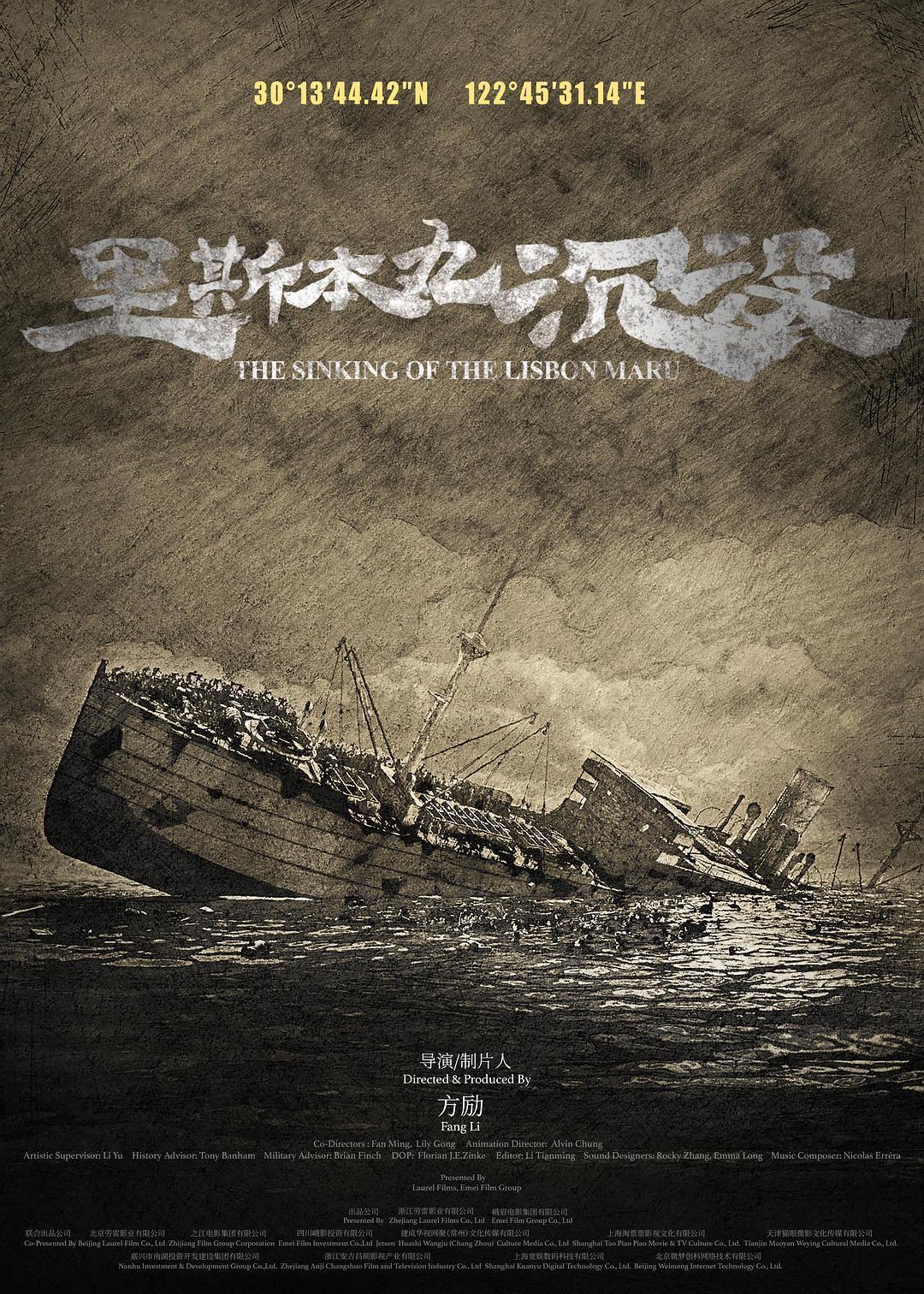
"When a ship sinks to the ocean floor, when a person becomes a mystery." This line from the theme song of the film "Continent" conceals a devastating true story that unfolded over 80 years ago. But this story centers not on a single "person", but on 828 of them.
In late December 1941, Japanese forces occupied Hong Kong, capturing thousands of British soldiers. By the end of September 1942, the Lisbon Maru, carrying 1,834 British prisoners of war (POWs), departed from Hong Kong bound for Japan. As it navigated near Dongji Island in Zhejiang Province, the ship, armed with cannons and without any identification as a POW transport, was struck by a torpedo fired from the American submarine "Grouper". As a result, the Lisbon Maru sank in early October.

In the 25 hours between the torpedo strike and the ship's sinking, the Japanese military confined the British POWs in the lower decks, sealing the hatches with wooden planks and canvas. The prisoners fought desperately for their lives, breaking out of the holds in a bid to escape. In a remarkable act of bravery, fishermen from Zhoushan, Zhejiang, ventured into the tumultuous waters, risking their lives to rescue 384 British soldiers and providing them with food, clothing, and shelter. Tragically, however, 828 prisoners drowned, were shot or died trapped inside the vessel during this catastrophe.
Fang Li, the producer of "Continent", had experience in shipwreck salvage before entering the film industry. In 2014, after he learned about the story of Lisbon Maru's sinking while on Dongji Island, he pinpointed the current location of the Lisbon Maru with the aid of a marine technology team. Over the subsequent years, he utilized the sonar footage of the wreck to visit every survivor, victims' families, and even the descendants of the American and Japanese personnel responsible for the incident. The tragic story of the sinking, along with the ongoing sorrow haunting hundreds of families for over 80 years, was brought to light through the documentary "The Sinking of the Lisbon Maru".

Fang Li noted that the tale of the Lisbon Maru is far more tragic than that of the Titanic. The Titanic disaster stemmed from a natural calamity compounded by human error, while the sinking of the Lisbon Maru was a consequence of atrocities. The development of the event is dramatic. A Japanese armed transport carrying numerous British soldiers was struck by an American torpedo, while Chinese fishermen braved gunfire to save those lives. The blend of brutality and heroism in this story is truly beyond any screenwriter's imagination.
Since its release on September 6th, the film has achieved an impressive rating of 9.2 on Douban, a content-sharing platform, with viewers commenting, "I shed a liter of tears in the cinema," "The truth carries immense weight," and "One of the most emotionally impactful films in recent years."
《里斯本丸沉没》:如何打捞一段比《泰坦尼克号》更震撼的历史
“当一艘船沉入海底,当一个人成了谜。”这句电影《后会无期》主题曲的歌词背后,藏着一个发生在80多年前的真实惨烈故事。但这个故事的主角不是“一个人”,而是828个。
1941年12月底,日军占领香港,数千名英国士兵被俘。1942年9月底,载有1834名英军战俘的里斯本丸从香港起航,驶往日本。在行驶到浙江东极岛附近海域时,因为船体装有大炮,且未作任何战俘标识,里斯本丸被美军潜艇“鲈鱼号”发射的鱼雷击中。10月初,里斯本丸沉没。
从里斯本丸被击中到沉没的25个小时里,日军将所有英军战俘封锁在船舱底,并用木条和帆布钉死舱门。英军战俘奋勇自救,破舱逃生。危难之际,浙江舟山渔民冒着生命危险,划着舢板在水中救起了384名英国战俘,并为他们提供食物、衣物和庇护所。但是,仍有828名战俘在这次事件中被淹死、被射杀、或困在船中丧生。

2014年,担任《后会无期》制片人的方励,在东极岛听说了里斯本丸沉没的故事。进入电影行业之前曾从事过沉船打捞行业的他,带着海洋科技队伍定位了里斯本丸如今所在的位置。之后几年,他带着沉船的声呐影像,拜访了他所能找到的所有事件幸存者、遇难者家属乃至导致事件发生的美日相关人员的后代。里斯本丸沉没的故事,连同它沉没后80多年后数百个家庭延绵不绝的悲哀,通过纪录电影《里斯本丸沉没》,呈现在世人面前。
方励说,里斯本丸的故事比泰坦尼克惨烈得多。泰坦尼克号的悲剧是因为自然灾害加人为失误,而里斯本丸沉没则是暴行导致,而且它的过程太戏剧化了——日本的武装运输船被美军鱼雷击中,没想到上面装了无数英军,最后是中国的渔民冒着枪林弹雨进去拯救生命……这个故事里的残暴和义举,没有编剧能编得出来。
电影在9月6日上映后,豆瓣评分高达9.2分,观众评价“在电影院流了一公升眼泪”“真实自有千钧之力”“近年来最震撼人心的电影”。
文|记者 李丽
图|片方提供
翻译丨洪婷
英文审校丨赵凡
-
Why games made in Guangdong are so powerful
2024-09-14 23:36:40 -
Enjoy the golden autumn in Guangzhou and celebrate the Mid-Autumn Festival with full moon and happiness
2024-09-14 23:36:39 -
Guangdong's foreign trade grows 12.8% YoY in first eight months of 2024
2024-09-14 23:36:39 -
CITIE 2024 kicks off: exciting experiences and great deals
2024-09-14 23:36:39






